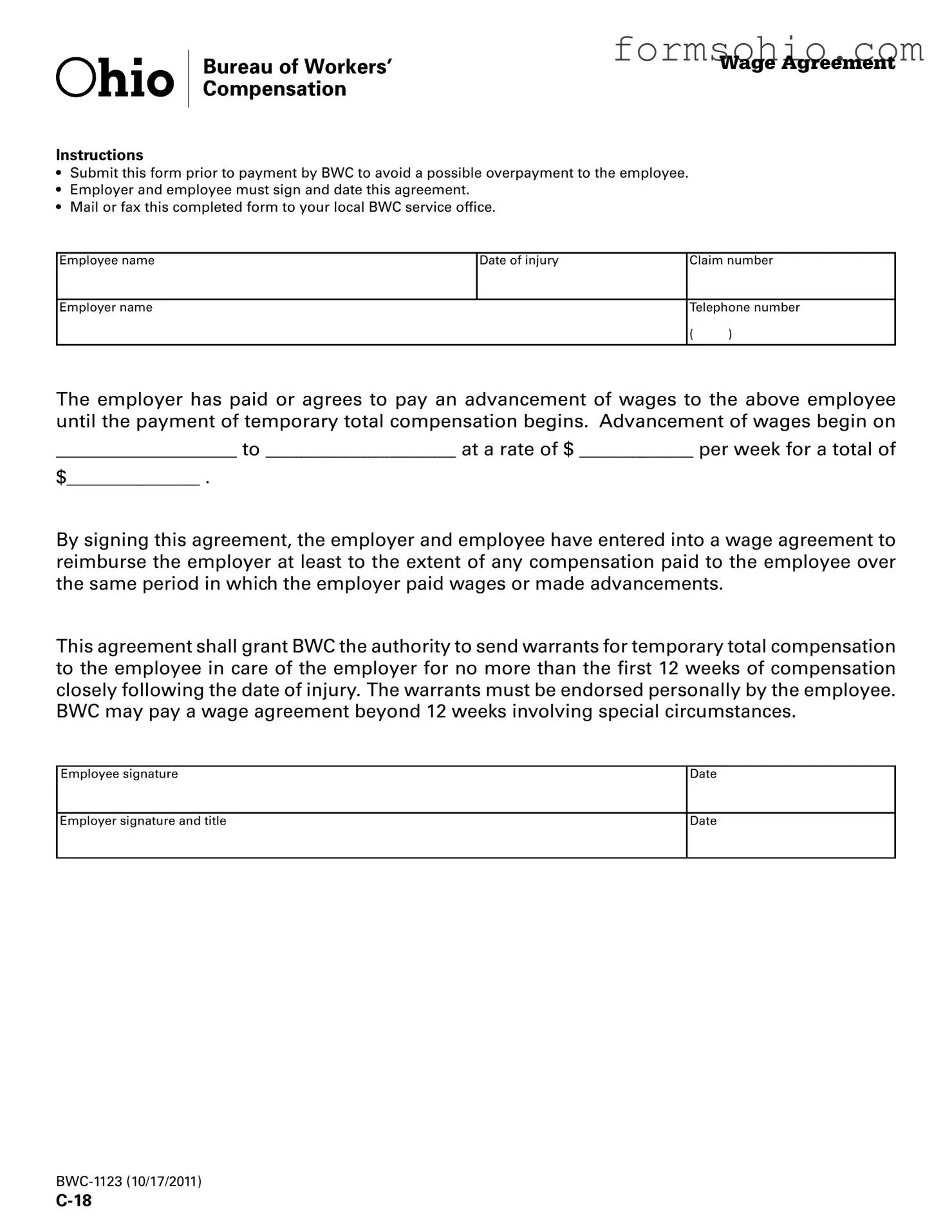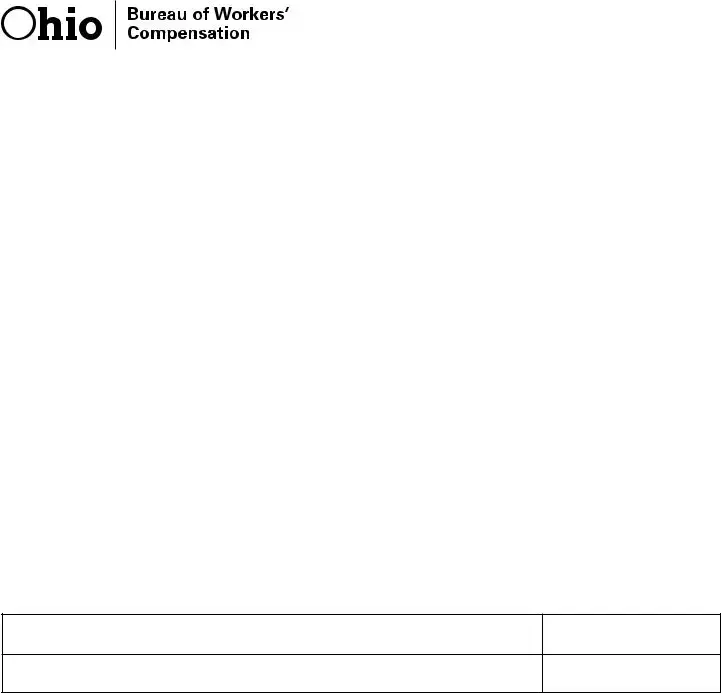Fill a Valid Wage Agreement Ohio Form
The Wage Agreement Ohio form is a crucial document that outlines the terms under which an employer agrees to advance wages to an employee following a work-related injury. This agreement ensures that the employer can recover the advanced wages once the employee begins receiving temporary total compensation from the Bureau of Workers' Compensation (BWC). By signing this form, both parties acknowledge their responsibilities and the timeline for wage advancements.
Get This Document Online

